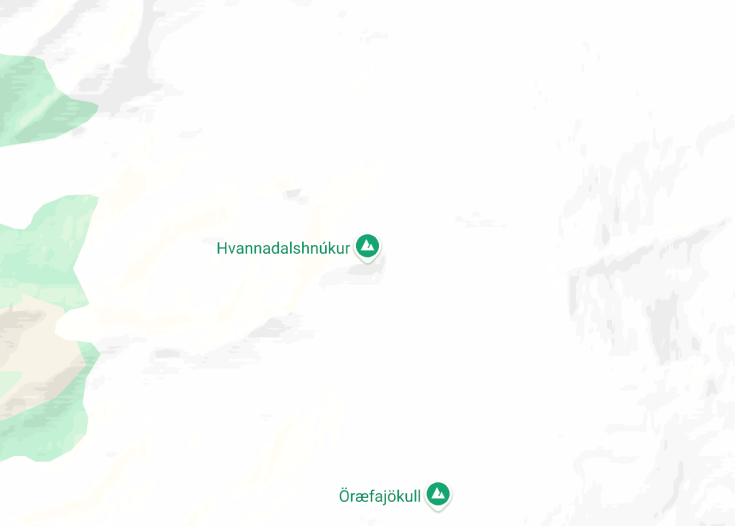Hvannadalshnúkur, the highest peak in Iceland, reaches an elevation of 2,110 meters and provides striking views over Vatnajökull, the largest glacier in Europe. This majestic summit is a prime spot for hikers seeking adventure amidst Iceland’s stunning natural beauty. The journey to Hvannadalshnúkur is both challenging and rewarding, offering a glimpse into the rugged landscapes that define Iceland’s terrain. For those looking to explore the raw, unfiltered wilderness of Iceland, Hvannadalshnúkur serves as an exemplary destination.
Ensure to check weather conditions before your hike and prefer planning your ascent during late spring or early summer for the safest experience.
Consider hiring a local guide for the ascent; their expertise can enhance safety and enrich your understanding of the area’s unique geology and history.
Hvannadalshnúkur: Iceland’s towering peak
Hvannadalshnúkur stands as the loftiest summit in Iceland, located in the remote Vatnajökull National Park. This enigmatic peak, reaching an elevation of approximately 2,110 meters (6,921 feet), is not just Iceland’s highest point but also a beacon for adventurers and tourists alike. Predominantly covered by snow, it offers a challenging yet exhilarating hiking experience that attracts thrill-seekers from around the world. Hvannadalshnúkur, sitting atop the massive Öræfajökull volcano, presents a particularly unique aspect of Icelandic natural beauty.
The volcano itself is noted for its spectacular eruptions and scenic importance. Experiencing this peak gives visitors a taste of Iceland’s harsh, yet picturesque environments. The ascent, while demanding, provides unparalleled views of Iceland’s rugged terrain, sprawling icecaps, and panoramic skies, making it a memorable part of an Icelandic adventure. This mountain not only signifies a natural wonder but also stands as a symbol of the enduring spirit of exploration and respect for nature seen throughout Iceland’s culture.
Adventures at Hvannadalshnúkur
This soaring summit offers various activities, primarily focused on hiking and climbing. Ascend Hvannadalshnúkur is a popular activity, providing an intense yet rewarding challenge. Skiers also find great joy here during the spring when the snow conditions are optimal. For the less adventurous, scenic flights around the peak offer astonishing aerial views of the surrounding landscape.
Safety Precautions
Due to the challenging nature of the terrain and the unpredictable weather conditions, it is crucial to undertake these activities with experienced guides and proper equipment.
A glimpse of raw beauty: Öræfajökull’s volcanic brink
While Hvannadalshnúkur is primarily known for its height, the underlying Öræfajökull volcano adds a layer of intriguing natural history. This volcano is known for its explosive past, notably its catastrophic eruption in the early 18th century, which dramatically impacted the local landscape and its communities. Today, it serves as a study site for volcanologists and a point of interest for those keen on understanding the powerful forces that shape our planet.
Explore the majesty of Hvannadalshnúkur
Hvannadalshnúkur, with its breathtaking views and challenging terrain, is predominantly suited for adventurous travelers and mountaineering enthusiasts. Its rugged landscape provides an excellent backdrop for a fulfilling visit for those who enjoy physically demanding activities and are in good physical health. Couples, groups of friends, and solo travelers keen on testing their limits will find Hvannadalshnúkur an unforgettable experience.
Discover the perfect timing for your adventure
Visiting Hvannadalshnúkur is exceptionally rewarding during the late spring and early summer months. The weather conditions are generally more favorable, providing clearer paths and relatively safer climbing conditions. Visitors can enjoy the natural beauty with minimal obstacles, making it the optimal period for climbing.
Annual Hiking Event
Hvannadalshnúkur hosts an exhilarating annual hiking event that attracts climbers from all over the world. Participating in this event could offer a unique experience to climb amidst a vibrant community of enthusiasts.
Understanding Accessibility and limitations of Hvannadalshnúkur
While Hvannadalshnúkur offers a remarkable experience, it’s essential to acknowledge its accessibility challenges and limitations.
Accessibility
Limitations
- Weather dependencies: Climbing is highly dependent on favorable weather conditions.
- Age restriction: Visitors under the age of 18 are not recommended to attempt the climb due to its difficulty.
Notes to visitors
- Please check weather conditions before planning your visit.
- Suitable gear and climbing equipment are mandatory.
- Respect local regulations and guidelines to preserve the area’s natural beauty.
General Information
Key details for visiting Hvannadalshnúkur
Location
Nestled among vast natural landscapes, Hvannadalshnúkur is conveniently located near key hiking trails and transportation hubs, providing accessible routes for hikers.
Address: Main Trails Base, Hvannadalshnúkur, Iceland.
Opening Hours
Hvannadalshnúkur is open to climbers from May to September, from dawn till dusk. Please note that climbing is weather permitting.
How to reach Hvannadalshnúkur
Car
Reaching Hvannadalshnúkur by car is one of the most convenient options. There is parking available at the base camp area.
| Route | Distance | Travel time |
|---|---|---|
| From Reykjavik | 210 miles (340Km) | 4 hours |
| From Vik | 80 miles (128Km) | 1.5 hours |
Bus
Regular bus services are available from major nearby cities to the base of Hvannadalshnúkur.
Nearby Attractions
- Ice Cave Tours – 3 miles (4.8 km)
- Volcano Museum – 10 miles (16.1 km)
- Glacial Lagoon – 15 miles (24.1 km)
- Natural Hot Springs – 18 miles (29 km)
- National Park Visitor Centre – 20 miles (32.2 km)
- Eco Village – 22 miles (35.4 km)
- Cliff Hang Paragliding – 25 miles (40.2 km)
Common Questions
What is the best time of year to climb Hvannadalshnúkur?
What kind of gear is needed for climbing Hvannadalshnúkur?
How difficult is the climb to Hvannadalshnúkur?
Are there guided tours available for Hvannadalshnúkur?
What wildlife might be seen around Hvannadalshnúkur?
How do I prepare physically for climbing Hvannadalshnúkur?
What are the safety concerns when climbing Hvannadalshnúkur?
Can beginners climb Hvannadalshnúkur?
What is the elevation of Hvannadalshnúkur?
Is special permission required to climb Hvannadalshnúkur?
What are the historic or geological features of Hvannadalshnúkur?
What is the typical duration of a climb to Hvannadalshnúkur?

Is Hvannadalshnúkur in Fagurhólsmýri worth visiting?
Hvannadalshnúkur, located in Fagurhólsmýri, stands as Iceland’s tallest peak within the Vatnajökull National Park, presenting a challenge and a reward for ambitious hikers. The summit offers stunning panoramic views that span ice caps and possibly even glimpses of far-off shores on a clear day. However, reaching this pinnacle is not a stroll in the park; it demands physical fitness and proper gear due to the steep, often snow-covered, terrain.
The climb also presents another challenge as it can be time-consuming, often taking full day or more. Therefore, for adventure-seekers and those who enjoy trekking, Hvannadalshnúkur is certainly worth a visit. Nevertheless, those unaccustomed to rigorous physical activity might find this mountain somewhat daunting. In the larger perspective, its natural beauty and the sense of accomplishment upon reaching the summit are invaluable experiences for many.










